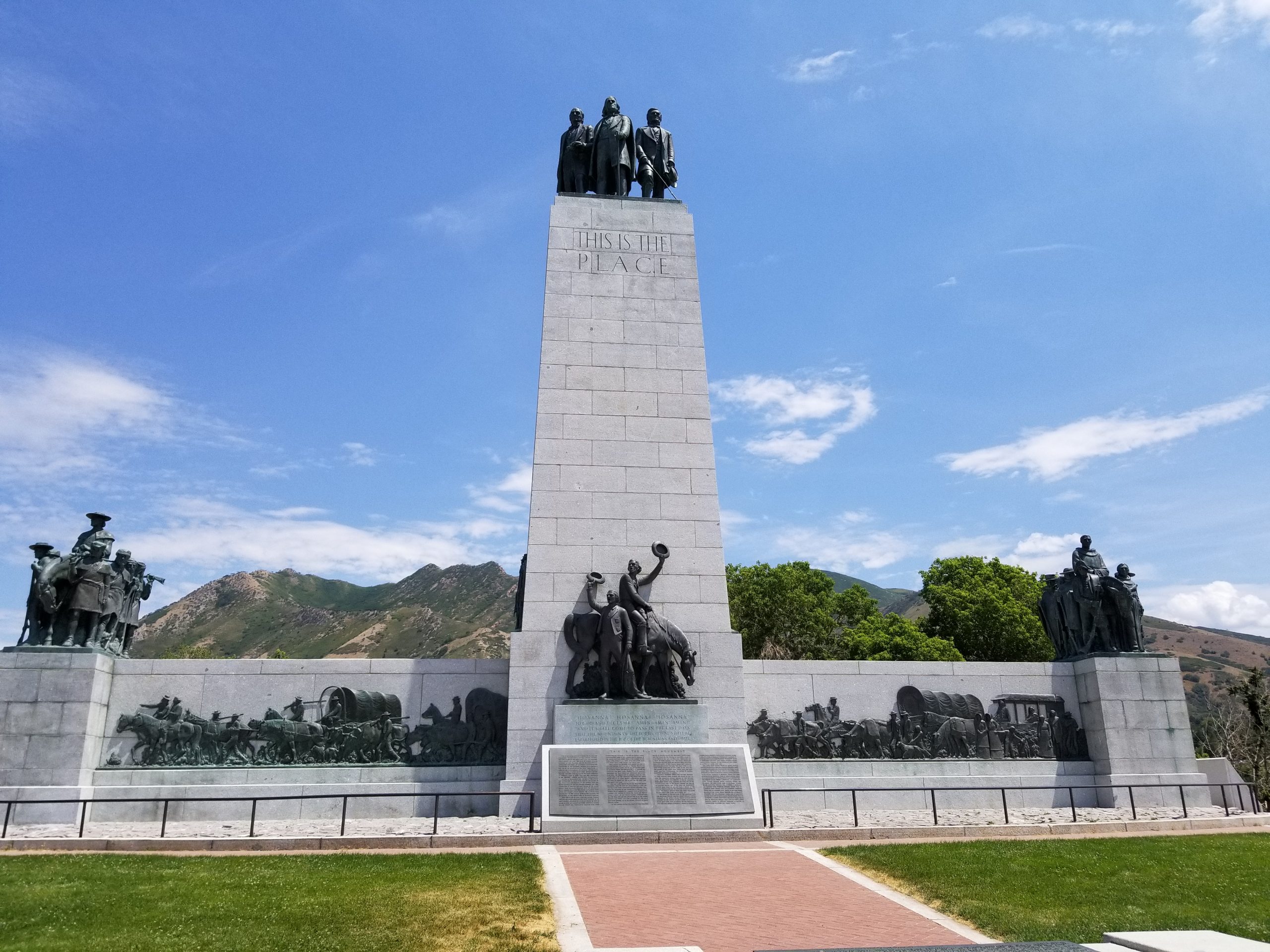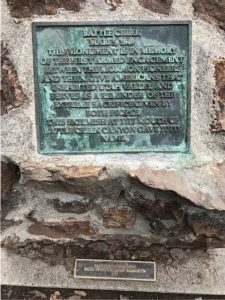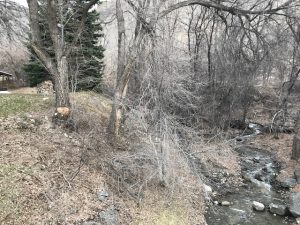Write up by Brittney Carter
GPS COORDINATES
40°21’48” N 111°42’2” W
Elevation 5260
Marker originally placed by: Jared Warburton, 1997
Marker Text:
“This monument is in memory of the first armed engagement between the Mormon pioneers and the Native Americans that inhabited Utah Valley, and serves as a reminder of the extreme sacrifice given by both people. This skirmish at the mouth of Battle Creek Canyon gave it its name.”
Extended Research
Battle Creek, which is now known as Pleasant Grove, was the site of the first battle between Native Americans and Utah pioneers. Mormon (LDS) leaders in Salt Lake City ordered militiamen to investigate reports in Utah Valley that Indians were killing cattle and that they had stolen Brigham Young’s horses. The accusation of horse theft proved untrue. As a result, the militiamen received new orders from Salt Lake City “stating that as the horses were not stolen . . . we need not spend any more time in search of them.” They were, however, directed to continue the expedition to investigate the killing of cattle. As Hosea Stout, one of the militiamen recalled, “the nature of our expedition was not in the least changed.”(1).
After a few days of travel, the militiamen made it to what is now American Fork and rested over night with a band of Ute Indians. Hosea Stout wrote, “the Company [got] an early start and traveled south to the Provo, a fine large stream and well timbered in the valley. This is a beautiful farming country. Here we found the Utahs, who . . . received us friendly but were much excited being evidently afraid of us. After spending an hour or so with them and learning what we could, respecting those we were in pursuit of and also explaining the object of our visit we traveled on. Little Chief accompanied us about three miles up the Provo where we encamped for the night”(1).
The militiamen split into two groups after they came upon a few Native Americans at Battle Creek Canyon who were still sleeping. When the Indians awoke and saw that they were surrounded by white men they tried to flee farther up the canyon, only to find another group of militiamen waiting for them. Before fighting began, an interpreter from among the militia tried to get the Native Americans to surrender.
As Hosea Stout recalled: “Our interpreters talked to them and told them our errand, and asked them to give themselves up. They refused. Our guide talked to them and reasoned with them, but all to no purpose, fight they would unless we went away, then they said they would come out. The guide told them they must come out then or die. . . . The first one shot was their leader. Then such a howling and crying, I think white men never heard before” (1).
After fighting broke out there were several casualties according to Oliver B. Huntington:
“All the bodies we could find were carried together to one place for burial: seven great, fat stout men. . . . When we got back to where we left the dead, there was neither dead nor living anywhere to be found. We did not think them worth hunting for anymore, and started home.” (2).
Mormon pioneers soon settled the land in Utah Valley because of the richness of the soil that militiamen witnessed on this expedition. Brigham Young had already planned to expand further south. As one history of Provo recounted, “Initial Mormon settlement thus was on the site of Salt Lake City. Nevertheless, Young planned to explore all valleys, and, when opportunity permitted, establish settlements in those sufficiently well-watered” (3). Mormon leaders selected Utah Valley as one area for settlement which led to further conflict with Ute Indians in the region.
Battle Creek remained the name of the area until years later when Mormon pioneers decided to change it to Pleasant Grove. The monument that is left at the base of Battle Creek Canyon, which leads to Battle Creek Falls, stands as a reminder of the first battle fought between Mormon pioneers and Native Americans. It also serves as a reminder that Mormon settlement came at a significant cost to Native Americans, in loss of life, land, and culture.
SOURCES
- On the Mormon Frontier, The Diary of Hosea Stout, 1844–1861, Vol. 2, Edited by Juanita Brooks, (Salt Lake City: University of Utah Press, 1964), 344-347.
- Diary of Oliver B. Huntington, 1847–1900, Vol. 2, L. Tom Perry Special Collections, Harold B. Lee Library, Brigham Young University, Provo, Utah, 47–55, 331-341.
- Writers Program, Provo, Pioneer Mormon City (Portland, Oregon : Binfords & Mort, 1942), 36-44.
For Further Reference
Primary Sources
On the Mormon Frontier, The Diary of Hosea Stout, 1844–1861, Vol. 2, Edited by Juanita Brooks, (Salt Lake City: University of Utah Press, 1964).
Diary of Oliver B. Huntington, 1847–1900, Vol. 2, L. Tom Perry Special Collections, Harold B. Lee Library, Brigham Young University, Provo, Utah.
Secondary Sources
Jared Farmer, On Zion’s Mount: Mormons, Indians, and the American Landscape (Cambridge: Mass: Harvard University Press, 2008).
Writers Program, Provo, Pioneer Mormon City (Portland, Oregon : Binfords & Mort, 1942).






